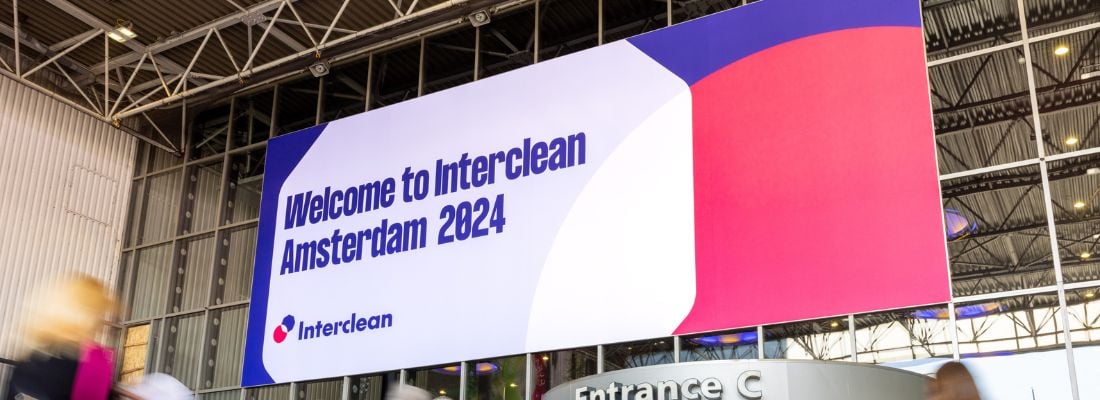Regional Spotlight : VR Trainings Improves Work Safety in Australia
Welcome to our monthly series, Regional Spotlight, where we explore exciting innovations in cleaning and hygiene across various regions. As a global platform for sharing knowledge, trends and insights, Interclean is proud to always bring you the very latest news and developments from the international cleaning industry.
How VR Training Improves Workplace Safety in Australia
In this month’s edition, we focus on the latest innovations in cleaning and hygiene in Australia with regards to updated WHS (work health and safety) strategy and Virtual Reality (VR) safety training.
In recent years, Work Health and Safety (WHS) strategies in Australia have undergone significant transformations, incorporating cutting-edge technologies and innovative approaches to ensure safer workplaces. Among the most notable advancements is the integration of Virtual Reality (VR) into safety training programs, which offers immersive and interactive learning experiences. As businesses across various industries strive to meet regulatory standards and improve their safety outcomes, these innovations are playing a crucial role in shaping the future of workplace safety.
How are the latest updates in Work Health and Safety (WHS) regulations in Australia impacting the cleaning and facility management sector?
In Australia, Work Health and Safety regulations are continuously evolving to address emerging risks and ensure workplace safety across all sectors. For the cleaning and facility management industry, the latest WHS strategy for 2023-2033 emphasises the importance of risk assessments, hazard controls, and ongoing employee training. The introduction of more stringent guidelines for managing hazardous substances, such as cleaning chemicals, and ensuring adequate training for staff using specialised equipment, like floor scrubbers or pressure washers, is particularly relevant.
The focus is now on ensuring that cleaning staff, many of whom work alone or in high-risk environments, have the proper knowledge and skills to identify and mitigate risks. For facility management businesses, implementing comprehensive safety audits, maintaining accurate records, and conducting routine training programs are now essential to comply with WHS standards and safeguard employees.
How does the updated WHS strategy impact businesses and workers in Australia?
The updated WHS strategy for 2023-2033 impacts both businesses and workers by ensuring that safety protocols are more comprehensive and inclusive. Businesses are required to adopt higher standards of safety management, including regular risk assessments and up-to-date training. For workers, the strategy enhances their protection by addressing both physical and mental health concerns and improving access to safety training, including innovative technologies like Virtual Reality (VR) training. This will ultimately lead to fewer workplace injuries and a more supportive work environment.
How does VR training improve workplace safety and reduce accidents?
VR training improves workplace safety by allowing workers to experience hazardous situations without any physical risk, which means they can learn how to handle dangerous scenarios in a safe, controlled environment. This hands-on experience helps them develop muscle memory, increase their situational awareness, and build confidence in applying safety protocols. Studies have shown that workers who undergo VR training retain information better and are more likely to apply safety procedures correctly when faced with similar situations in the real world. Ultimately, VR training leads to fewer accidents, reduced downtime, and greater overall workplace safety.
What are the advantages of VR training over traditional safety training methods?
The main advantages of VR training over traditional methods include:
- Immersive Experience: VR offers a fully immersive experience, making training scenarios more realistic and engaging.
- Risk-Free Environment: Workers can practice dangerous tasks without putting themselves or others at risk.
- Cost-Effective: While initial setup costs may be high, VR training can be more cost-effective in the long run, reducing the need for physical materials and travel for in-person training sessions
- Consistency: VR training ensures that all employees receive the same quality of training, regardless of location or trainer availability.
- Repeatability: Workers can revisit training scenarios as many times as needed to master a skill or response, which is often not possible with traditional training.
How does VR training help overcome common barriers in WHS compliance, such as language barriers or varying levels of experience in the cleaning and facility management workforce?
Another key advantage of VR training is its ability to bridge communication gaps, particularly in diverse workforces. In Australia, the cleaning and facility management industry often employs workers from various cultural and linguistic backgrounds. Traditional safety training methods, such as written manuals or classroom-based learning, can be challenging for employees who may have limited proficiency in English or different learning styles.
VR training can be customised with multilingual options and interactive visual cues that transcend language barriers, allowing employees to understand safety procedures regardless of their primary language. Additionally, VR provides hands-on experiences at varying levels of complexity, which means that employees with different levels of experience can engage in training that is appropriate for their skillset. This ensures that everyone, from newcomers to experienced workers, receives the necessary instruction to perform their tasks safely.
What are the key benefits of using VR for WHS training in terms of cost and efficiency for cleaning and facility management companies?
The use of VR for WHS training in the Australian cleaning and facility management sector offers several cost-effective advantages. First, the ability to conduct virtual training reduces the need for physical training equipment and the associated costs of safety gear or chemicals. It also eliminates the logistics and expenses tied to in-person training sessions, such as travel, accommodation, and venue hire.
Moreover, VR training programs are highly scalable, meaning they can be deployed across multiple locations simultaneously, ensuring consistency in safety training. This is especially valuable for facility management companies with large teams spread across different sites. VR training also minimises the risk of workplace accidents that could result in costly workers' compensation claims, fines, and disruptions to operations.
By offering employees a safe and controlled environment to learn and practice, companies can avoid costly accidents and injuries, ultimately leading to a reduction in long-term safety-related costs.
What challenges do businesses face when implementing VR safety training?
Some challenges businesses face when implementing VR safety training include the initial investment in VR equipment and software, which can be costly for smaller businesses. There may also be resistance to new technology from employees who are not familiar with VR or are hesitant to embrace digital learning methods. Additionally, businesses need to ensure they have the technical infrastructure to support VR training, such as high-quality computers and VR headsets. Finally, it is important to develop training programs that are both effective and aligned with specific industry needs, which can require expertise in both safety and VR development.
How do you see VR training evolving in the future, particularly in relation to workplace safety?
In the future, VR training is likely to become even more sophisticated, with advancements in artificial intelligence (AI), haptic feedback, and 5G connectivity improving the overall experience. AI could personalise VR training to individual workers’ needs, adjusting the difficulty or introducing specific scenarios based on past performance. Haptic feedback will make VR simulations more tactile, allowing workers to feel physical sensations like vibrations or pressure, making training even more realistic. With 5G, VR experiences can become more seamless and connected, allowing for remote collaboration in safety drills. As the technology advances, VR training will continue to play an essential role in improving workplace safety by creating even more engaging and effective learning environments.
What would you say to businesses or workers who are hesitant about adopting VR safety training?
We would encourage businesses and workers to view VR safety training as an investment in both safety and productivity. While it may seem daunting initially, the benefits far outweigh the challenges. VR training offers an opportunity to practice in realistic, risk-free environments, ensuring that workers are better prepared for emergencies and that businesses comply with the updated WHS strategy. It's not about replacing traditional methods but supplementing them with innovative tools that can enhance learning and safety outcomes. Given the advancements in VR technology, now is the perfect time to start embracing this powerful training tool.
Are there any Australian case studies or examples where VR training has successfully improved WHS outcomes in the cleaning and facility management sector?
Yes, several Australian facility management companies have successfully integrated VR training into their WHS programs. One notable example is a large facilities services provider that implemented VR-based training to improve the handling of hazardous materials, specifically cleaning chemicals. By using VR simulations, they were able to train employees in safe chemical handling practices, ensuring compliance with Australian WHS regulations and reducing the number of chemical-related incidents.
Another example is a cleaning company operating in the healthcare sector, where VR training modules were introduced to teach staff how to properly clean in high-risk environments like hospitals. This training helped reduce the likelihood of cross-contamination and infection control breaches, which is crucial in healthcare settings. As a result, the company saw a significant drop in safety-related incidents and a marked improvement in compliance with industry standards.
How do the latest developments in WHS regulations and VR safety training align with broader trends in workplace safety and technology in Australia?
The latest developments in WHS regulations and VR safety training reflect broader trends in the Australian workforce, where technology is playing an increasingly important role in workplace safety. Australia is embracing digital transformation across industries, and the cleaning and facility management sector is no exception. The push for more innovative and effective training methods aligns with a larger national drive to adopt technologies that enhance productivity, reduce risks, and ensure employee well-being.
The use of VR training aligns with Australia's broader commitment to improving workplace safety standards through technology. In the future, we can expect to see even more integration of AI, machine learning, and real-time data analytics in WHS systems, further enhancing safety and compliance in the cleaning and facility management sector. The ongoing evolution of WHS strategies, combined with technological advancements like VR, ensures that Australia's workplace safety standards remain among the best in the world.
Share your stories with us!
Do you have an innovation or interesting news you would like to share with the professional cleaning and hygiene industry? The Interclean website and social media channels are a great platform to showcase your stories!
Please contact our press department interclean@rai.nl.
Are you an Interclean exhibitor?
Make sure you add your latest press releases to your Company Profile in the Exhibitor Portal for free exposure.
Receive the best newsletter on cleaning & hygiene - straight to your inbox!
We promise never to send you spam and you can unsubscribe at any time!





